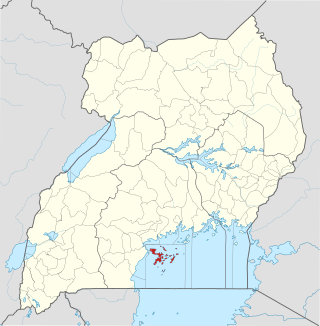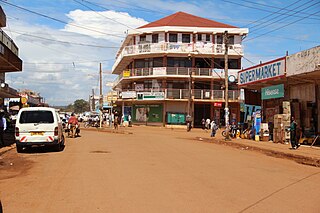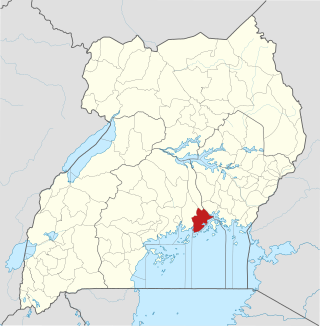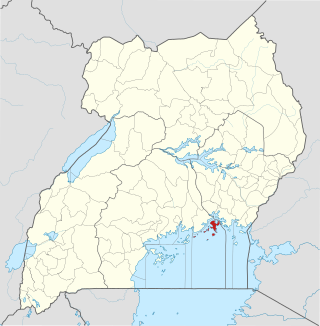
The Suba (Abasuba) are a heterogeneous Bantu group of people in Kenya with an amalgamation of clans drawn from their main tribes Ganda people, Luhya people, and Soga who speak the Suba language that is closely similar to the Ganda language spare some lexical items borrowed from [[Luo. Their population is estimated at 157,787, with substantial fluent speakers. They migrated to Kenya from Uganda and settled on the two Lake Victoria islands of Rusinga and Mfangano, others also settled on the mainland areas including Gembe, Gwassi, Kaksingri of Suba South and Migori and are believed to be the last tribe to have settled in Kenya. The immigrants to present-day Subaland trace their ancestry among Ganda people, Luhya people, [[Busoga|Sogs, and the Luo people. The evidence supporting this is the fact that some Suba groups speak languages similar to Luganda, and the Luhya. The Suba groups tracing ancestry among the Kenyan tribes preceded those groups from Uganda in present-day Subaland and are the numerous and influential ones. Those groups from Uganda are mostly concentrated in Rusinga and Mfangano islands with small pockets of them being found in mainland Kenya. Linguistically, the Suba are highly influenced by the neighbouring Luo, to the point of a language shift having taken place among large portions of the mainland Suba. As a result, their own language has been classified as endangered. Despite this language shift, the Suba have kept a distinct ethnic identity. The Rusinga Festival is held in December of every year as a cultural festival to celebrate and preserve Suba culture and language.

The Ssese Islands are an archipelago of eighty-four islands in the northwestern part of Lake Victoria in Uganda. The islands are coterminous with the Kalangala District in southern Central Uganda, which does not have any territory on mainland Uganda.

Jinja is a city in the Eastern Region of Uganda, located on the North shores of Lake Victoria.

Lake Victoria ferries are motor ships for ferry services carrying freight and/or vehicles and/or passengers between Uganda, Tanzania, and Kenya on Lake Victoria.

Kalangala, also known as Ssesse, is a district in Central Uganda. The district is coterminous with the Ssese Islands in Lake Victoria and does not have territory on mainland Uganda. Like other Ugandan districts, it is named after its 'chief town', Kalangala which is located on Bugala Island, the largest of the Ssese Islands.

Mukono is one of the districts in the Central Region of Uganda. The town of Mukono is home to the district's main commercial center and district headquarters.

Mayuge District is a district in Eastern Uganda. Like many other Ugandan districts, it is named after its 'chief town', Mayuge, where the district headquarters are located.
Bubembe Island is an island in Lake Victoria inside the country of Uganda. In the religion of the Buganda people, it is the home of the temple of Mukasa.

Rusinga Island, with an elongated shape approximately 10 miles (16 km) from end to end and 3 miles (5 km) at its widest point, lies in the eastern part of Lake Victoria at the mouth of the Winam Gulf. Part of Kenya, it is linked to Mbita Point on the mainland by a causeway.

Mfangano Island lies in the eastern part of Lake Victoria, at the mouth of the Winam Gulf. Part of Kenya, it lies west of Rusinga Island. The island is 65 km2 in area and rises to 1,694 m at Mount Kwitutu. It had a population of 16,282 at the 1999 census. Administratively, Mfangano is part of Homa Bay County.

Mount Elgon National Park is a national park 140 kilometres (87 mi) northeast of Lake Victoria. The park covers an area of 1,279 square kilometres (494 sq mi) and is bisected by the border of Kenya and Uganda. The Ugandan part of the park covers 1,110 km2 (430 sq mi) while the Kenyan part covers 169 km2 (65 sq mi). The Kenyan part of the park was gazetted in 1968, the Ugandan part in 1992.

There are two major sources of fish in Uganda; one is from aquaculture, the other from fishing in rivers and lakes. The latter has made up the largest and most significant share of all fishing. Open water covers 15.3 percent of Uganda's surface and comprises five major lakes which are the main sources of fish in the country. Lake Victoria continues to be the most important water body in Uganda both in size and contribution to the total fish catch, followed by Lake Albert and Lake Kyoga.

Kiira Hydroelectric Power Station, is a hydroelectric power station in Uganda, with an installed capacity of 200 megawatts (270,000 hp).

The Sezibwa River is a river in Central Uganda, in East Africa. The name is derived from the Luganda phrase "sizibwa kkubo", which translates into "my path cannot be blocked".
Wilmar International Limited is a Singaporean food processing and investment holding company with more than 300 subsidiary companies. Founded in 1991, it is one of Asia's leading agribusiness groups alongside the COFCO Group. It ranks amongst the largest listed companies by market capitalisation on the Singapore Exchange (SGX), being the second largest as of September 2010. It was ranked 211th in the Fortune Global 500 list in 2020. It was ranked 3rd in the World's Most Admired Company by Fortune in 2019.
Bugala Power Station is a 1.5 megawatts (2,000 hp) biodiesel-fired thermal power plant located on Bugala Island, in Kalangala District, in the Ssese Islands Archipelago, on Lake Victoria, in south-central Uganda.

Buikwe District is a district in the Central Region of Uganda. It is named after its 'chief town', Buikwe, where the district headquarters are located.

Buvuma District is a district in the Central Region of Uganda. The district is coterminous with the Buvuma Islands archipelago in Lake Victoria and does not have territory on mainland Uganda.
Katosi is a town in the Mukono District of the Central Region of Uganda. The town is an urban center under Mukono District Administration.
Rusinga Cultural Festival is an annual two-day celebration of the culture of the Abasuba people of Kenya. It is held on the last Thursday and Friday before Christmas on Rusinga Island. The festival was founded by Anne Eboso and administered through Chula Cultural Foundation.















